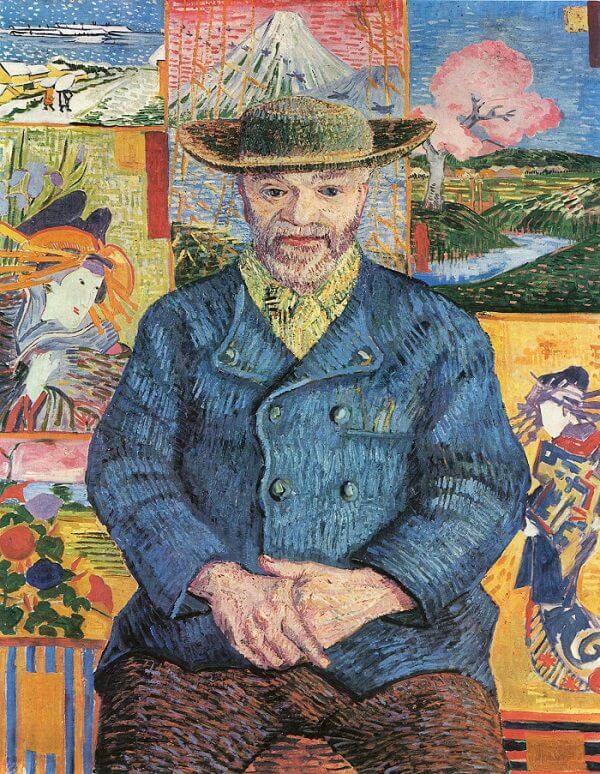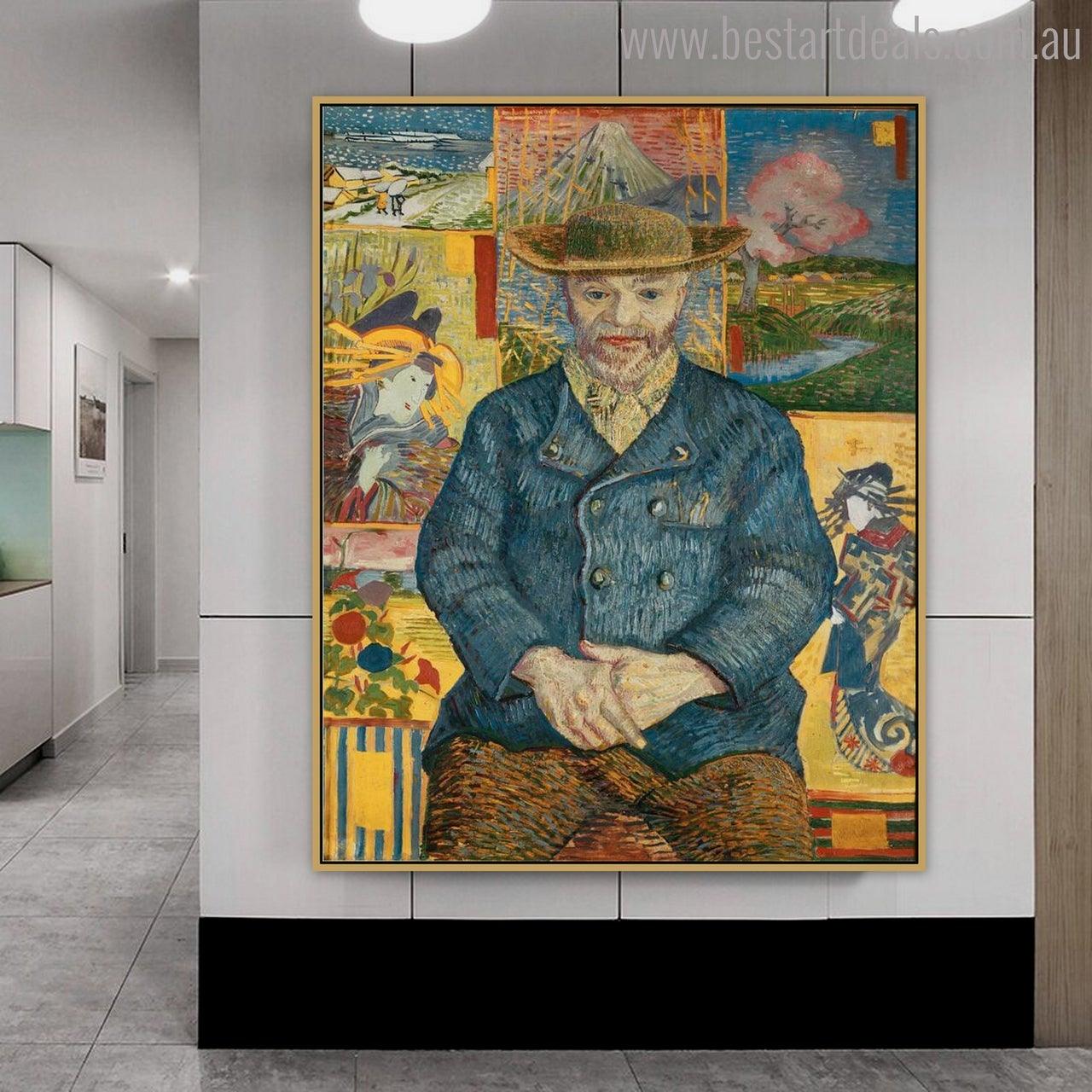Description
Van Gogh actually painted three portraits of Père Tanguy, whose friendship he valued greatly.
Père Tanguy” was an art dealer and one of the first to put Van Gogh's paintings up for sale. Tanguy accepted paintings as payment for his wares, which made his art shop in Montmartre, filled with Impressionist paintings, like visiting a museum.
In this extraordinary work, from which the dealer never wanted to part, the pure colours, the use of contrasting complementary colours, the visible and well-positioned brushstroke and the flat space of the image are characteristics of a neo-impressionist style that the artist used very freely.
Père Tanguy's cheerful demeanor and enthusiasm for art made his shop one of the most favored art supply stores in Paris, for which he was nicknamed Père ("the Father") Tanguy.
This brightly colored painting represents a change in Vincent's attitude and style. Van Gogh called his use of bright colors "his gymnastics", as he experimented with creating great depth and harmony in his artwork.
The background is covered with Van Gogh's favorite Japanese prints that were sold in Tanguy's shop. Gogh's favorite Japanese prints included images of Mount Fuji, Kabuki actors, and cherry blossoms.
During Van Gogh's stay in Paris between 1886 and 1887, he attempted to master a new, lighter palette. This "Portrait of Père Tanguy" shows his success with the brightest palette and is evidence of an evolving artistic style.
In this work, from which the merchant will never want to part, the pure colors, the use of complementary contrasts, the visible and oriented brushstrokes, the flat space, are just a few elements of a neo-impressionist language that the painter uses freely. Van Gogh chooses to represent the older man in a strictly frontal position, immobile, hands crossed over his stomach, eyes lost in a dream, and succeeds in communicating all the kindness and modesty of the character.
Van Gogh pays homage to the “color grinder” that he turns into a kind of old Japanese sage, placing him against a background completely saturated with countless intensely colored Japanese prints that the painter collects, together with his brother Théo.
Tanguy was a supportive father figure who shared his food and money with the artists and enthusiastically displayed their paintings.
Perhaps this is why Van Gogh met many artists in Julien "Père" Tanguy's painting workshop, including Émile Bernard and Henri de Toulouse-Lautrec, who became his friends.
After van Gogh's death, his funeral was attended by Julien Tanguy, who was among twenty family members and friends at the service.
Van Gogh died in 1890 and Tanguy four years later.
When Tanguy died, his friends in his artistic circle organized an auction for his widow.
After Tanguy's death, his daughter sold the Portrait of Père Tanguy to the sculptor Auguste Rodin. The last Portrait of Père Tanguy is now in the permanent collection of the Musée Rodin in Paris.






